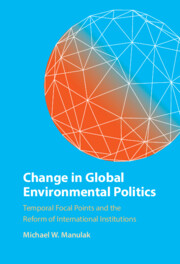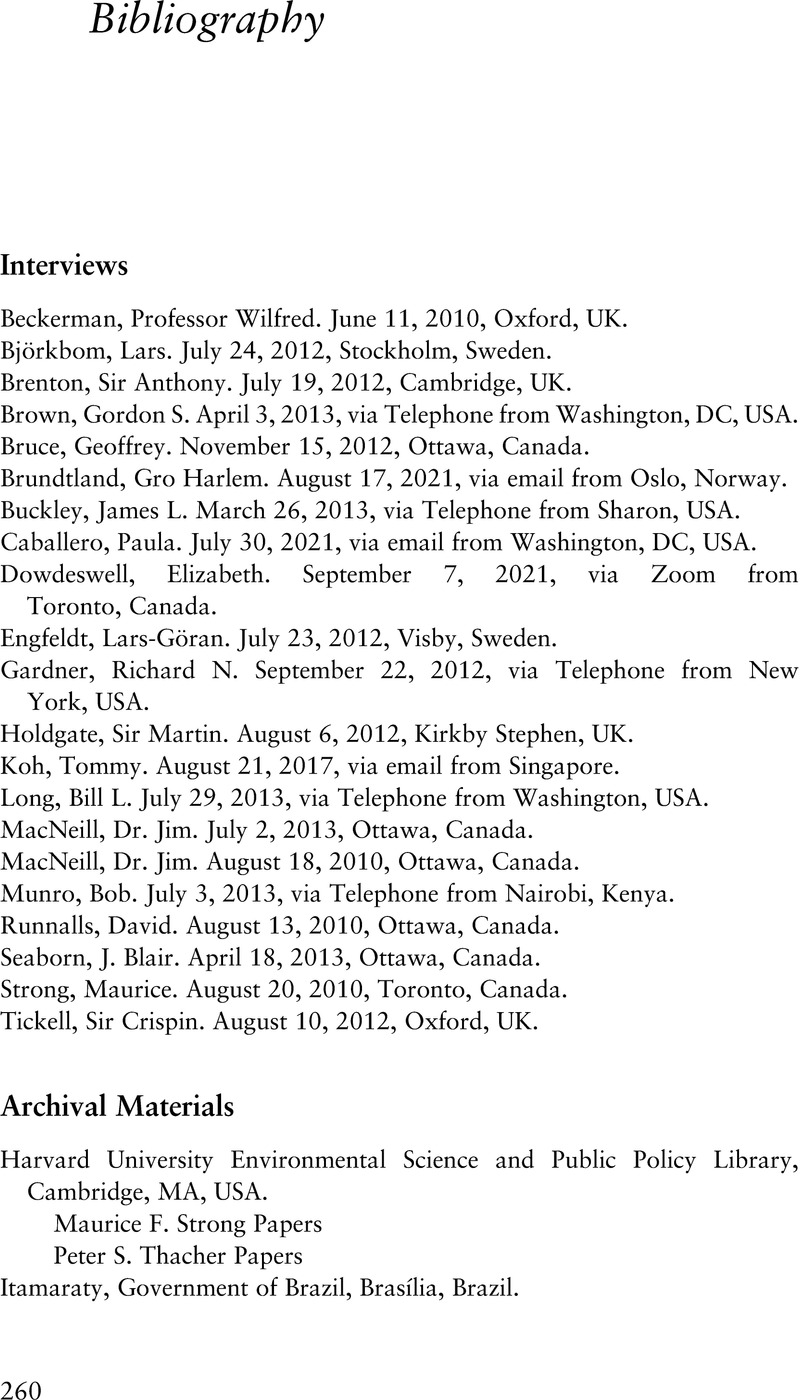 Change in Global Environmental Politics
Change in Global Environmental Politics Book contents
- Change in Global Environmental Politics
- Change in Global Environmental Politics
- Copyright page
- Dedication
- Contents
- Figures and Tables
- Acknowledgments
- Abbreviations
- 1 Introduction
- 2 It’s About Time
- 3 The Stockholm Conference and Institutional Change
- 4 UNEP and the 1982 Nairobi Conference
- 5 The Brundtland Commission and the Seeds of Change
- 6 The Rio Conference and Institutional Change
- 7 Post-UNCED UN Environmental Institutions
- 8 Conclusion
- Bibliography
- Index
- References
Bibliography
Published online by Cambridge University Press: 12 May 2022
- Change in Global Environmental Politics
- Change in Global Environmental Politics
- Copyright page
- Dedication
- Contents
- Figures and Tables
- Acknowledgments
- Abbreviations
- 1 Introduction
- 2 It’s About Time
- 3 The Stockholm Conference and Institutional Change
- 4 UNEP and the 1982 Nairobi Conference
- 5 The Brundtland Commission and the Seeds of Change
- 6 The Rio Conference and Institutional Change
- 7 Post-UNCED UN Environmental Institutions
- 8 Conclusion
- Bibliography
- Index
- References
Summary

- Type
- Chapter
- Information
- Change in Global Environmental PoliticsTemporal Focal Points and the Reform of International Institutions, pp. 260 - 291Publisher: Cambridge University PressPrint publication year: 2022


